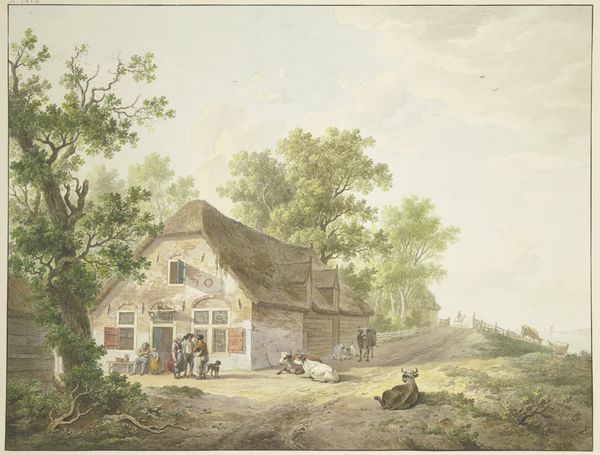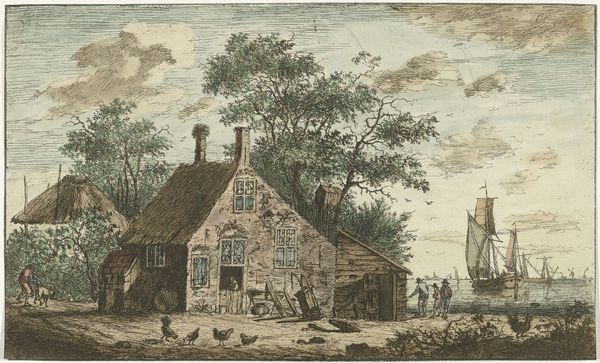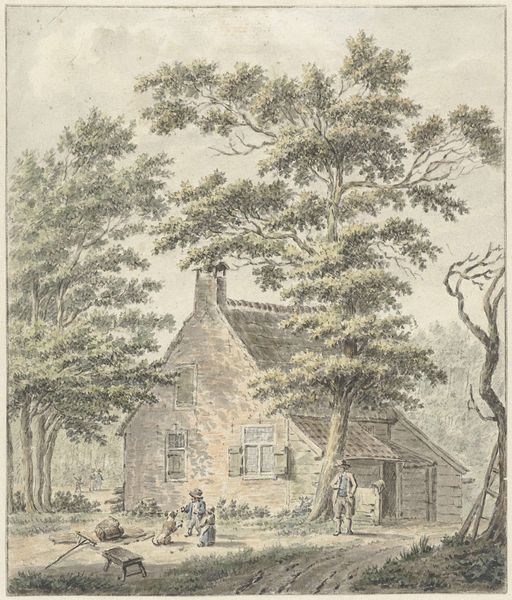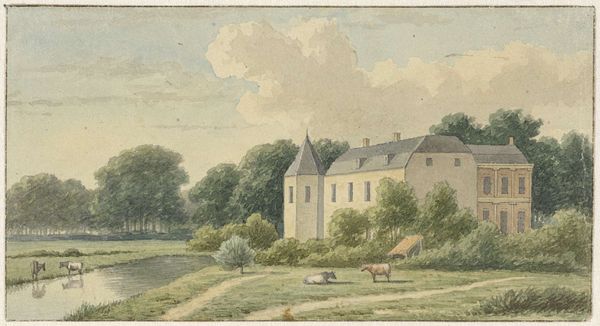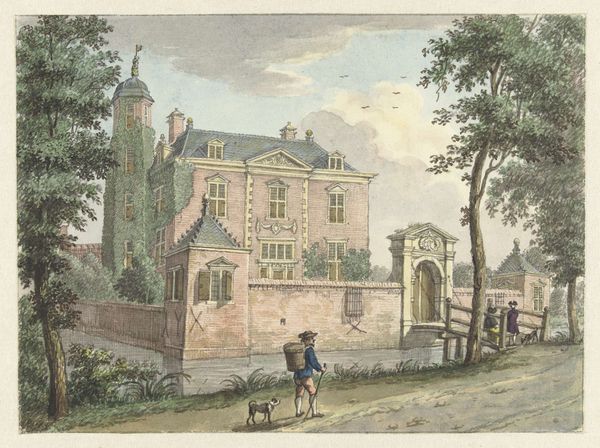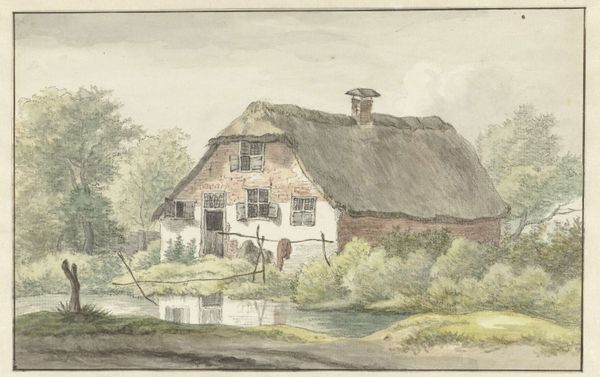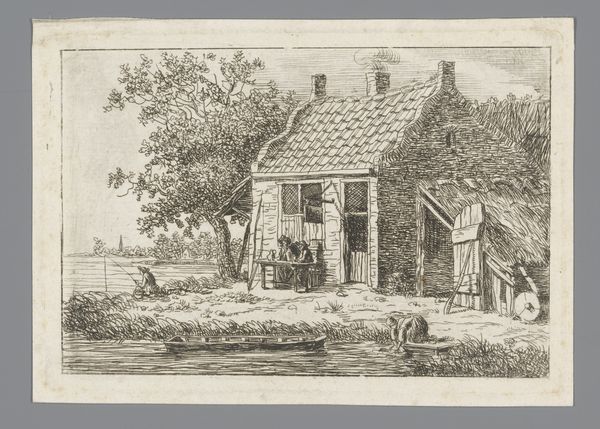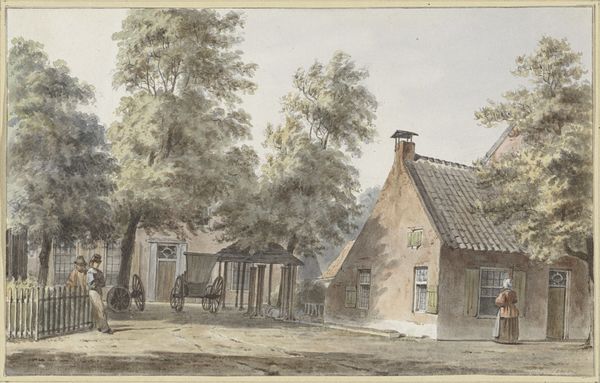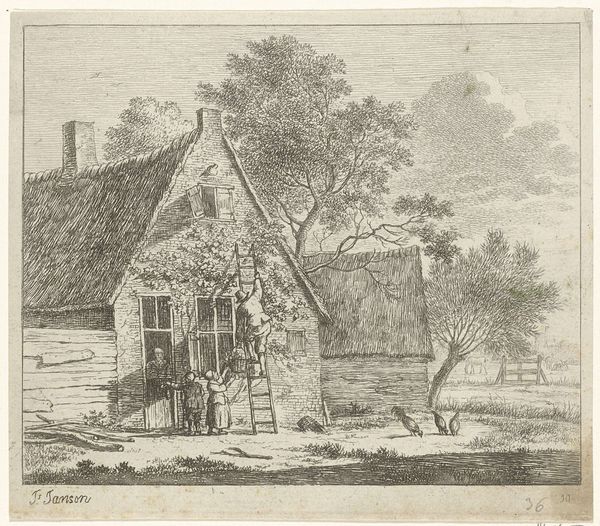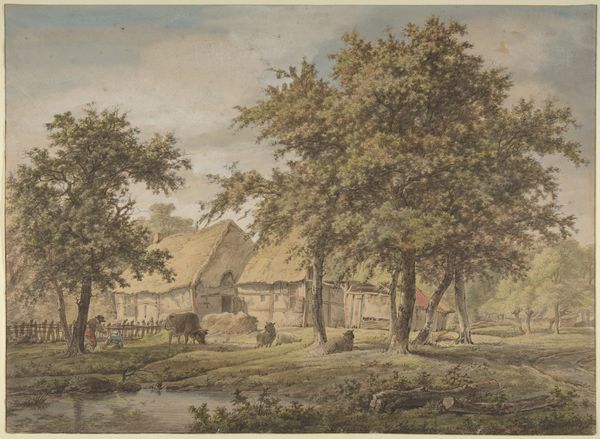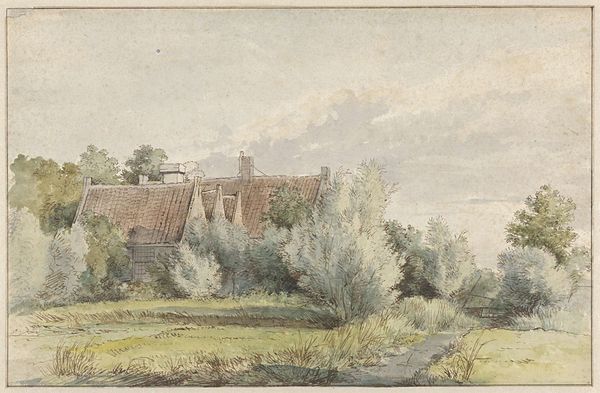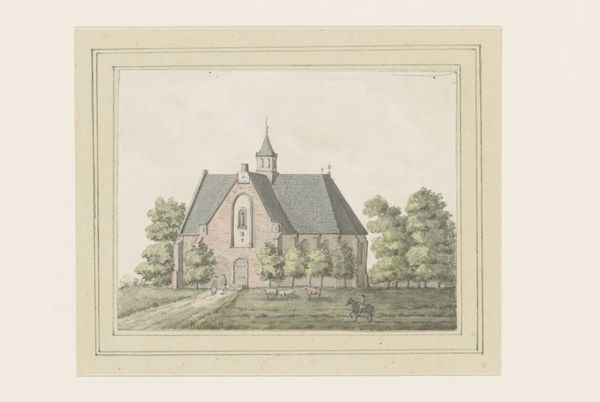
watercolor
#
landscape illustration sketch
#
dutch-golden-age
#
landscape
#
watercolor
#
coloured pencil
#
underpainting
#
watercolour illustration
#
genre-painting
#
watercolor
Dimensions: height 326 mm, width 428 mm
Copyright: Rijks Museum: Open Domain
Editor: This is "De herberg Holland op 't Smalst" by Cornelis Apostool, made sometime between 1772 and 1844. It’s currently held at the Rijksmuseum. It seems to depict a very peaceful scene of rural life. All the lines feel very soft, very quiet, as if not to disturb the scene. What symbols do you find at play? Curator: A deceptively simple scene, isn’t it? Look at how the house, with its high, narrow façade, dominates the composition. The architecture almost acts as a visual barrier, doesn't it? The eye is subtly directed towards a separation between the private, domestic sphere within the home, with a woman visible in the doorway, and the public, pastoral scene outside, represented by the man seated outside, child, dog, and the sheep. Editor: I see what you mean. So, you think that there's a divide represented here? Is that common for art from this period? Curator: Remember, visual elements like this are carefully constructed narratives. Genre paintings often play with symbolic divides. How do you interpret the presence of the sheep, particularly their positioning so prominently? Editor: Well, sheep are traditionally associated with innocence, but maybe also with dependence? Are they meant to indicate that rural people were naive and relied on each other? Curator: Potentially. Consider also that the Dutch Golden Age had long passed, and perhaps here, the artist is hinting at a collective memory of that era's prosperity juxtaposed with contemporary rural life, or longing for the idealized past. Are there shadows anywhere? Is this place idyllic? Editor: That's fascinating; I didn't consider that. There's something wistful about the whole piece now that you mention the light, actually. It doesn't seem super-realistic in its details. Curator: And what we are left with? Visualizations that carry both emotional and cultural weight. Each image then represents a certain continuity through different social memories and experiences.
Comments
No comments
Be the first to comment and join the conversation on the ultimate creative platform.
